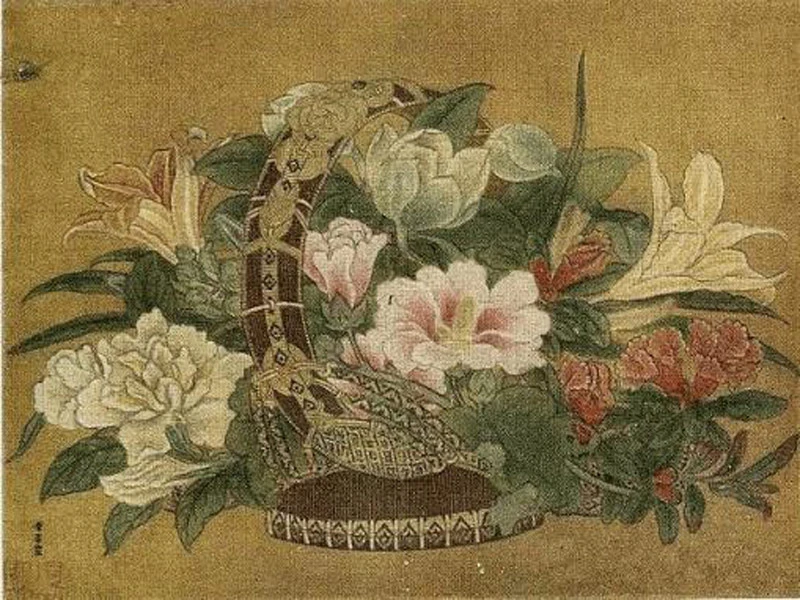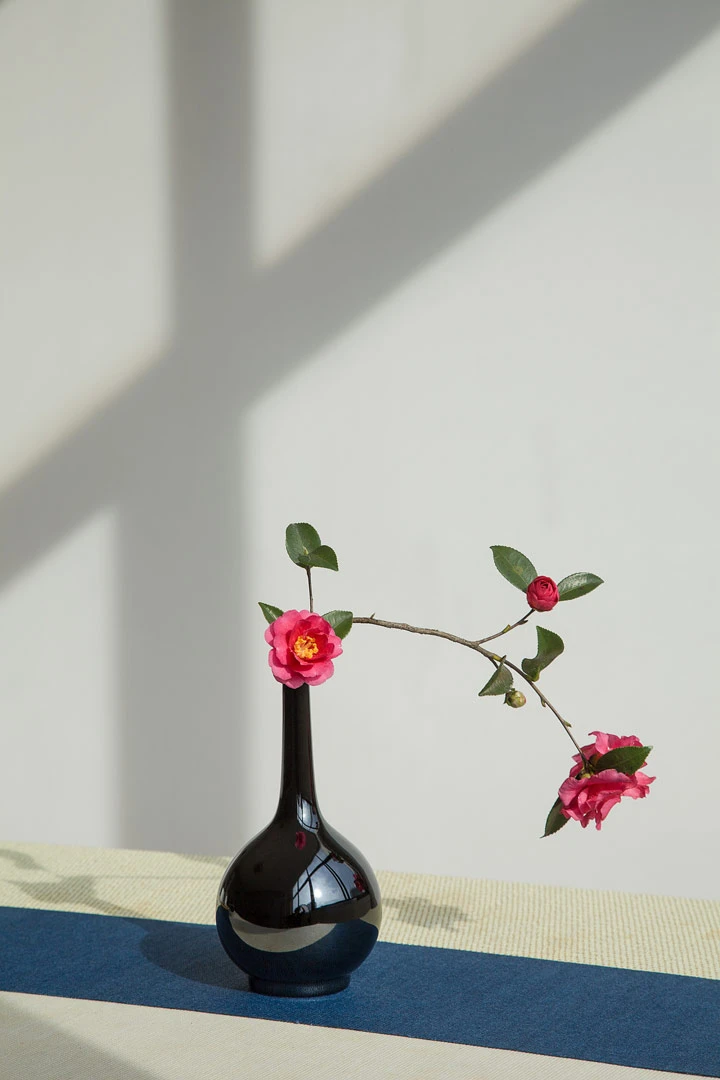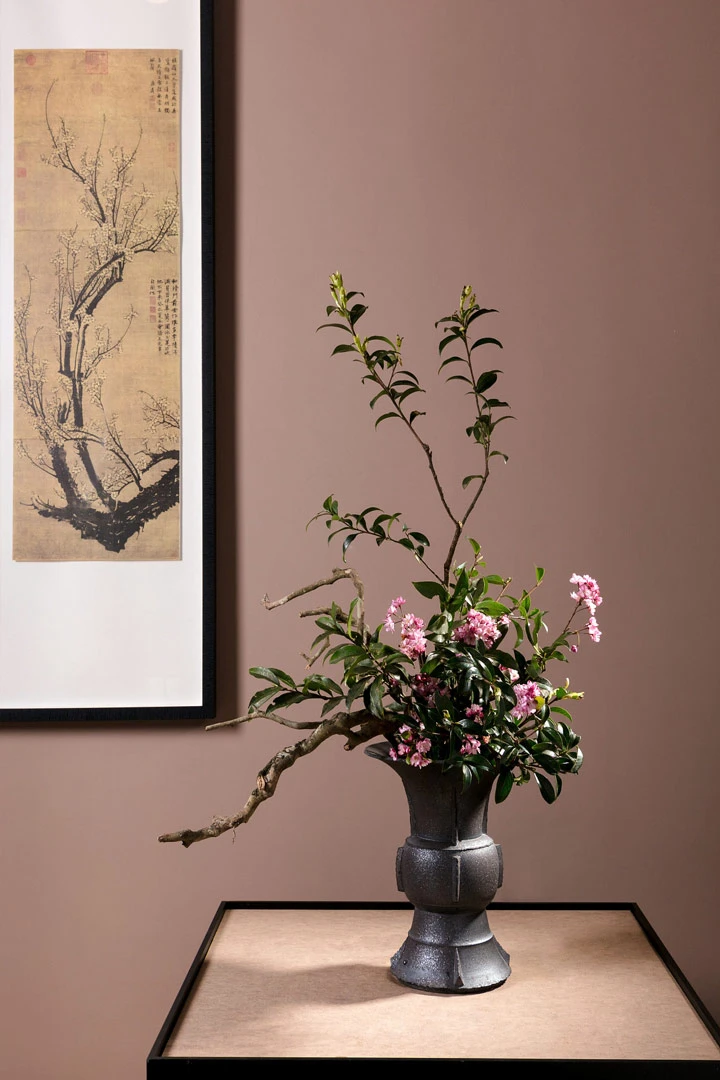In the serene county of Huize, nestled within Qujing City, the ancient art of Chinese flower arrangement, or Chahua (插花) , flourishes under the skilled hands of Dan Shunmei, known as the "Flower Fairy." Recognized as an intangible cultural heritage, this traditional practice has been carefully preserved and revitalized, breathing life into the rich cultural tapestry of Huize.
In ancient China, flower arrangement was esteemed alongside incense burning, tea brewing, and painting as one of the "four arts" of refined living. During the Sui and Tang dynasties, this practice blossomed, inspiring countless poets and artists and giving rise to seminal works like Luo Qiu's "The Nine Precepts of Flowers (花九锡)." This treatise, likening flower arrangement to greatest honor of serving emperor, laid down nine principles for handling the peony, showcasing the meticulous artistry and aesthetic sophistication of the era.
The Nine Precepts of Flowers
1. Double Dome: Enveloping flowers in dual canopies to shield them from the elements.
2. Golden Shears: Using gilded, sharp scissors to finely trim flower stems.
3. Sweet Springs: Nourishing flowers with natural spring water.
4. Jade Vases: Utilizing top-tier, jade-like porcelain vases to enhance floral beauty.
5. Ornate Stands: Placing arrangements on intricately carved stands to signify their nobility.
6. Artistic Depictions: Capturing the beauty of arrangements through live sketches for posterity.
7. Harmonious Tunes: Complementing floral displays with impromptu music to weave a refined atmosphere.
8. Fine Wines: Enjoying exquisite wines to elevate the floral experience.
9. Poetic Tributes: Composing impromptu poetry to encapsulate the essence of the flowers.
Over time, flower arrangement transcended its initial confines, incorporating various vessels like jars and urns to better suit different flower types and environments. This evolution merged other artistic elements—painting, poetry, wine, and music—into a comprehensive cultural experience.
The Legacy of Literati Flower Arrangement
The art form also inspired "literati flower arrangement," where scholars and artists expressed their emotions and philosophical musings through floral designs. This practice, seen as both an aesthetic pursuit and a reflection of the arranger's inner world, emphasized subtlety and depth. Every arrangement, from a single branch to a full display, embodied profound meaning and personal sentiment, bridging the gap between natureand human expression.
A Historic Venue for a Timeless Art
Step into the Jiangnan Guild Hall in the ancient city of Huize, and you're greeted by a picturesque scene. This two-story wooden structure, exuding classical charm, is complemented by an elegant garden adorned with a variety of flowers in full bloom. Arched gates, intricately designed flower stands, and vibrant blooms create a stunning "Hundred Flowers" tableau, enhanced by green vines that drape the walls and gates.
In a corner of this garden, Dan Shunmei teaches her two apprentices the nuances of Chinese flower arrangement. "When arranging flowers, consider the size of the vessel," she explains, deftly trimming and arranging stems. "The height of the first flower should be the vessel's height plus its diameter. The second flower should be two-thirds of the first, and so on. The key principle is to have a larger base and smaller top."
Dan's lesson isn't just about technique; it's a philosophy. "Chinese flower arrangement values aesthetic appeal and thematic expression," she notes. "You must trim away any flowers that don't contribute to the theme, reflecting the traditional Chinese wisdom of 'gaining by giving up.'"
The Art of Balance and Harmony
After her lesson, Dan turns to create another piece. She picks a small, antique flower basket, two seemingly unremarkable wild fruits, a few common chrysanthemums, lilies, and green leaves. Under her touch, these simple elements transform into a breathtaking arrangement. "Chinese flower arrangement uses six main vessels: vases, plates, baskets, jars, buckets, and bowls," she explains. "I'm working on a basket arrangement, ensuring a golden ratio with heights and placements. The philosophy here is to create an illusion of natural beauty."
Dan's dedication to her craft has led to the recognition of "Huize Traditional Chinese Flower Arrangement" as a part of Huize's intangible cultural heritage. However, her journey with this art form was unexpected. Years ago, Dan opened a flower shop to make a living and went to Wuxi, Jiangsu, to learn flower arrangement. Initially trained in Western styles, she was captivated by Chinese flower arrangement during a class demonstration and felt an immediate connection.
A Lifelong Dedication
Her passion led her to Beijing Forestry University, where she formally studied under Wang Lianying, an 80-year-old master dedicated to preserving and promoting Chinese flower arrangement. "Wang's dedication inspired me deeply. I realized that if she could be so committed at her age, I had no excuse not to follow through," Dan recalls. Wang's spirit solidified Dan's path and deepened her love for the art.
Today, Dan is not only a mentor at the Jiangnan Guild Hall but also visits schools across Huize, teaching over a thousand students the art of Chinese flower arrangement. "My mission is to root this traditional art deeply in Huize. Beyond the technique, it's about the culture and spirit. Embedding this spirit in one's life can lead to positivity and brightness," Dan asserts confidently. "I believe the path of spreading Chinese flower arrangement will only grow wider and more far-reaching."



